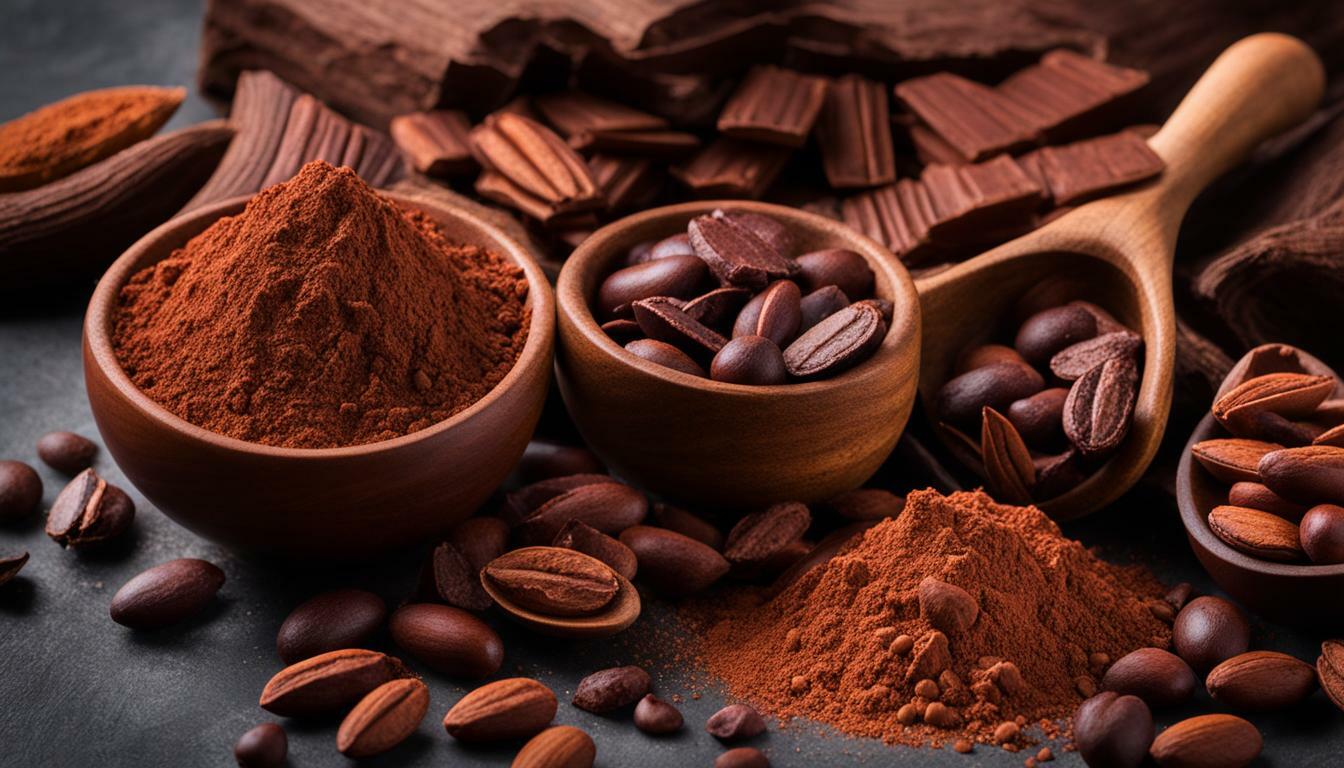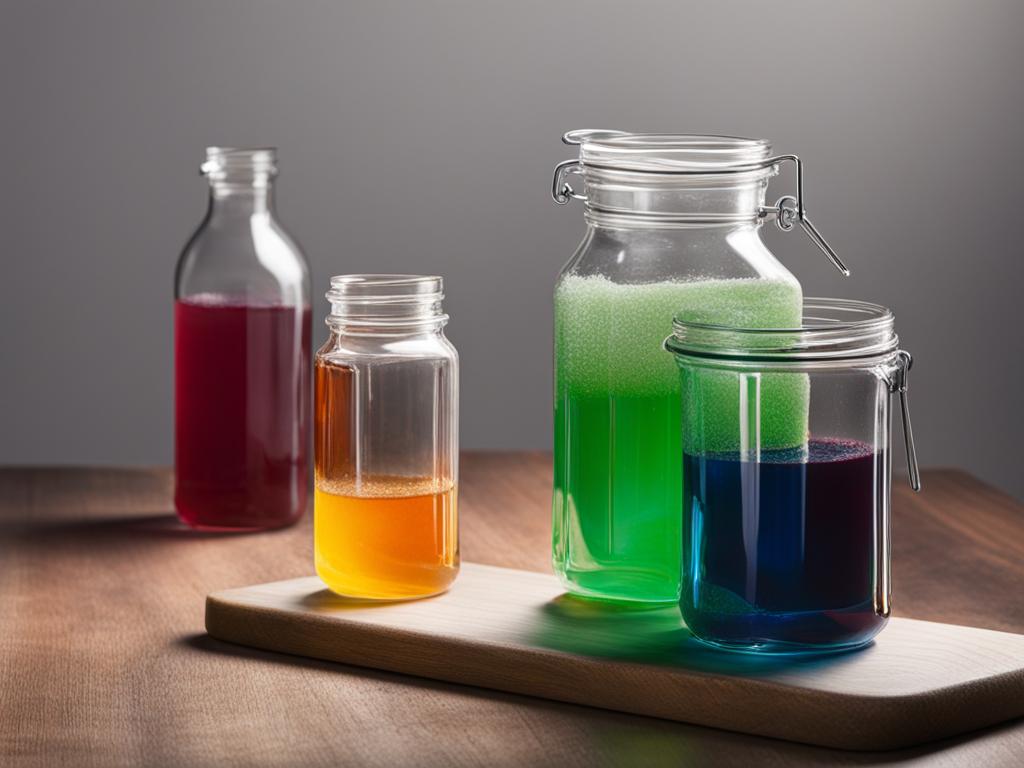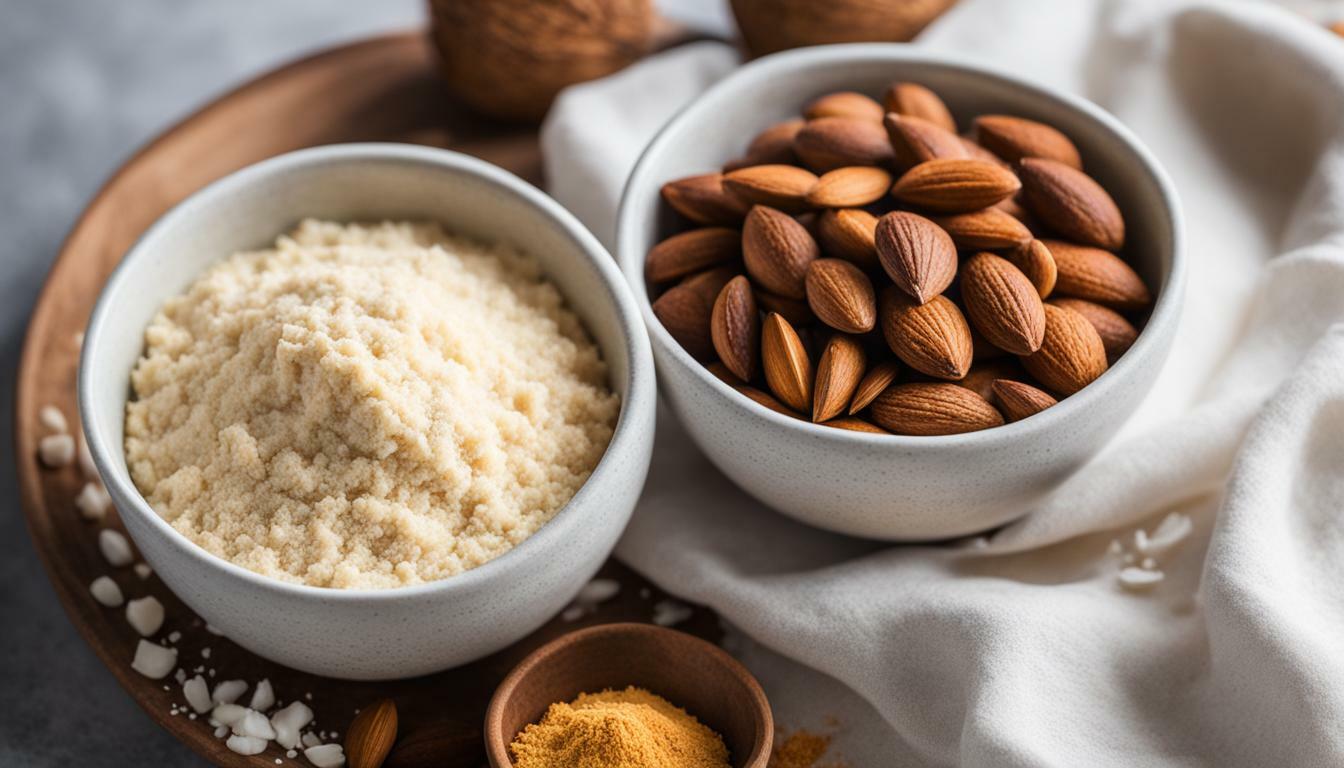When it comes to chocolate and baking, you may have heard the terms cocoa and cacao before. While they may seem interchangeable, they actually refer to two distinct ingredients. It’s important to understand the difference between cocoa and cacao if you want to take your culinary skills to the next level.
Cocoa and cacao both come from the same plant, but they are processed differently and have unique flavor profiles. In this article, we’ll take a closer look at the distinction between cocoa and cacao and how they are used in cooking and baking.
Key Takeaways:
- Cocoa and cacao are two different ingredients with distinct processing methods.
- Understanding the difference between cocoa and cacao can enhance your culinary skills.
Cocoa vs Cacao: Origins and Processing Methods
While cocoa and cacao are often used interchangeably, they are not the same thing. In fact, their differences extend beyond just the spelling and pronunciation of their names. Cocoa and cacao are derived from the same plant, but they undergo different processing methods, resulting in variations in flavor and nutrition.
Cocoa Origins and Processing Methods
Cocoa comes from the Theobroma cacao tree, which is native to Central and South America. The cocoa pods, which contain cocoa beans, are harvested and split open to remove the beans. The beans are then fermented for a few days, which allows the flavor to develop while reducing bitterness. After fermentation, the beans are dried, roasted, and ground into a paste. This paste is then pressed to remove the cocoa butter, resulting in cocoa powder.
The processing of cocoa involves high heat, which reduces the nutritional content of the beans. As a result, cocoa powder has a lower nutritional value than cacao powder. However, cocoa powder is often used in baking recipes due to its stronger and more consistent flavor compared to cacao powder.
Cacao Origins and Processing Methods
Cacao, on the other hand, is made from unroasted cocoa beans that are cold-pressed to remove the cocoa butter. This process retains more of the nutrients found naturally in the beans, resulting in a powder that is higher in antioxidants and minerals.
Because cacao only undergoes minimal processing, it has a slightly bitter flavor compared to cocoa powder. It is also less soluble than cocoa powder, meaning it may not dissolve as easily in liquids. However, its unique flavor and nutritional benefits make it a popular choice for health-conscious individuals.
| Cocoa | Cacao | |
|---|---|---|
| Origin | Central and South America | Central and South America |
| Processing Method | Fermented, dried, roasted, and ground | Cold-pressed and ground |
| Nutritional Content | Lower due to high heat processing | Higher due to minimal processing |
| Flavor | Strong and consistent | Slightly bitter |
As you can see, the differences between cocoa and cacao go beyond just their names. Understanding their origins and processing methods can help you choose the right ingredient for your culinary needs.
Cocoa and Cacao: Unique Attributes and Flavors
When it comes to cocoa and cacao, there are distinct differences in their taste and aroma. Understanding these distinctions can make a huge difference in your culinary creations.
Cocoa is generally sweeter and has a milder flavor compared to cacao. The beans are roasted at higher temperatures, which significantly reduces their natural bitterness. This process also changes the color of the beans, giving them a brown appearance.
Cacao beans, on the other hand, have a deeper, earthy flavor and a slightly bitter taste. They are typically processed at lower temperatures, which helps maintain their natural bitterness. As a result, cacao products tend to have a darker color than cocoa products.
One of the key differences between cocoa and cacao is their fat content. Cacao contains more natural fats, which contribute to its rich flavor and texture. In contrast, cocoa beans are often processed to remove some of the natural fats, resulting in a less rich flavor and texture.
The unique attributes and flavors of cocoa and cacao can enhance various recipes. For instance, cocoa is excellent for making milk chocolate, while cacao is ideal for making dark chocolate. Additionally, cacao is commonly used in savory dishes, such as mole sauce, to add a rich, complex flavor.
Understanding the contrasts and distinctions between cocoa and cacao can help you make more informed decisions when it comes to choosing ingredients for your recipes.
Cocoa and Cacao Uses and Variations
Cocoa and cacao are versatile ingredients that can be used in a variety of culinary delights. From classic chocolate cakes and fudgy brownies to more innovative savory dishes and beverages, the possibilities are endless. Let’s explore some of the most common uses of cocoa and cacao in cooking and baking.
Chocolate Making
Cocoa and cacao are essential ingredients in chocolate making. They give chocolate its characteristic flavor and texture, and the percentage of cocoa or cacao solids determines the intensity of the chocolate flavor. While cocoa powder is commonly used in milk chocolate, cacao is typically used in dark chocolate and provides a more intense, less sweet flavor.
Desserts
Cocoa and cacao are also popular ingredients in desserts such as cakes, brownies, and cookies. Cocoa powder is often used as a flavoring agent in baked goods, while cacao nibs or chopped cacao beans can provide a crunchy texture and more complex flavor profile. Additionally, cacao butter is commonly used in making truffles and other chocolate confections.
Beverages
Cocoa and cacao can be used to make delicious hot or cold beverages. Hot cocoa is a classic winter treat, while chocolate smoothies and milkshakes make a refreshing drink in warmer months. Cacao nibs or cacao powder can also be added to coffee for a mocha-like flavor.
Savory Dishes
Cocoa and cacao can be used in savory dishes to add depth and complexity to the flavor profile. Mole sauce, a traditional Mexican sauce, is made with cacao powder, while cocoa powder can be used in dry rubs for meats. Cacao nibs can also be used to add texture and flavor to dishes such as chili and stews.
As you can see, cocoa and cacao offer a wide range of uses and variations in the culinary world. Whether used in sweet or savory dishes, they provide unique flavors and textures that can take your cooking and baking to the next level.
Cocoa and Cacao Similarities
Although cocoa and cacao differ in many ways, they share several similarities that make them essential ingredients in various recipes.
One of the most apparent similarities between cocoa and cacao is their high antioxidant content. Both are rich in flavanols, which are known for their potent antioxidant properties. These antioxidants can reduce inflammation, improve heart health, and even boost cognitive function.
In terms of flavor, cocoa and cacao also share similarities. Both have a bitter taste that pairs well with sweetness. Additionally, they both have a rich, earthy aroma that adds depth to any dish.
Another way in which cocoa and cacao are similar is in their versatility. Both can be used in a variety of culinary delights, from sweet treats like chocolate truffles to savory dishes like mole sauce.
Lastly, cocoa and cacao are both used in traditional medicine practices, particularly in South America. They are believed to have various health benefits, from boosting energy to reducing stress.
Overall, while cocoa and cacao have distinct differences, their similarities make them equally valuable in cooking and baking.
Conclusion
Understanding the difference between cocoa and cacao is crucial for anyone who enjoys cooking and baking. While they are often used interchangeably, they have distinct flavor profiles and properties that can greatly impact the outcome of your culinary creations.
Through this article, we have explored the origins and processing methods of cocoa and cacao, and how they are used in various recipes. We have also highlighted their unique attributes and discussed their similarities.
By incorporating cocoa and cacao into your cooking and baking, you can take your creations to the next level. Whether you prefer the rich, creamy flavor of cocoa or the bold, bitter taste of cacao, knowing the difference can help you achieve the perfect outcome.
So the next time you reach for cocoa or cacao in the kitchen, remember the distinctions between the two and experiment with their unique uses and flavors. Your taste buds will thank you!



